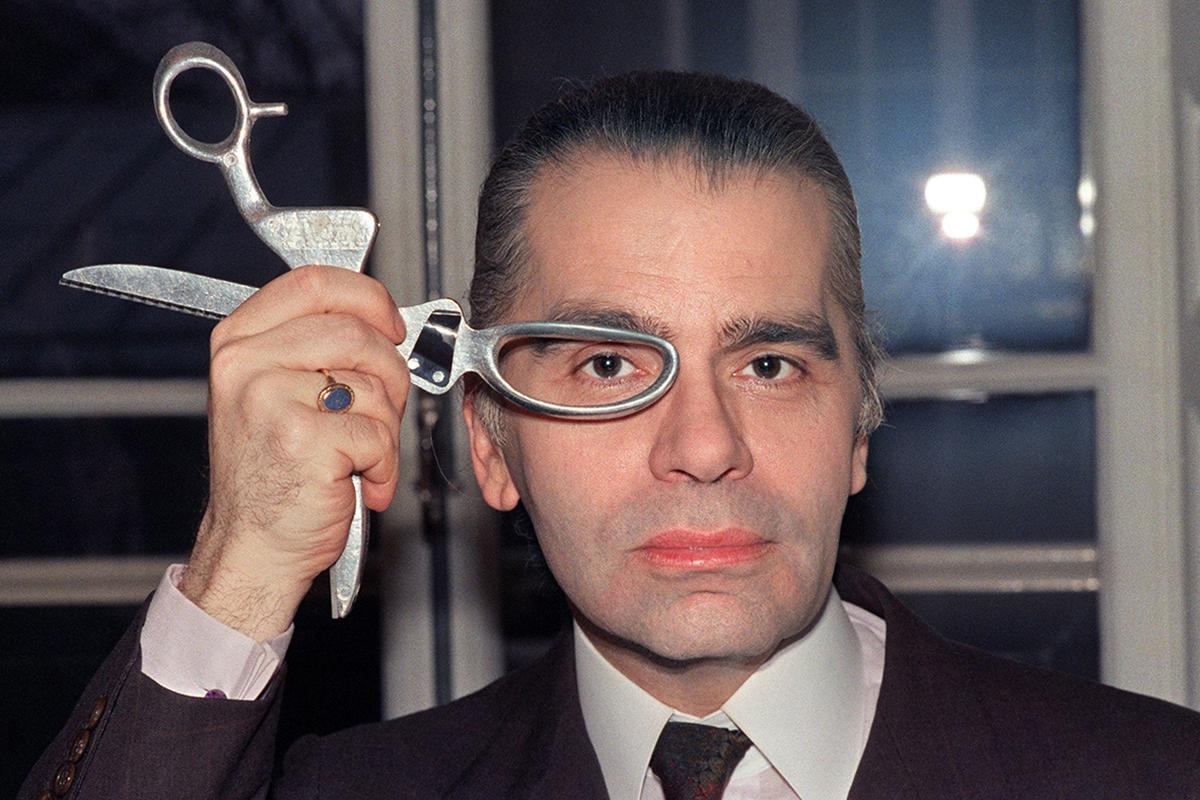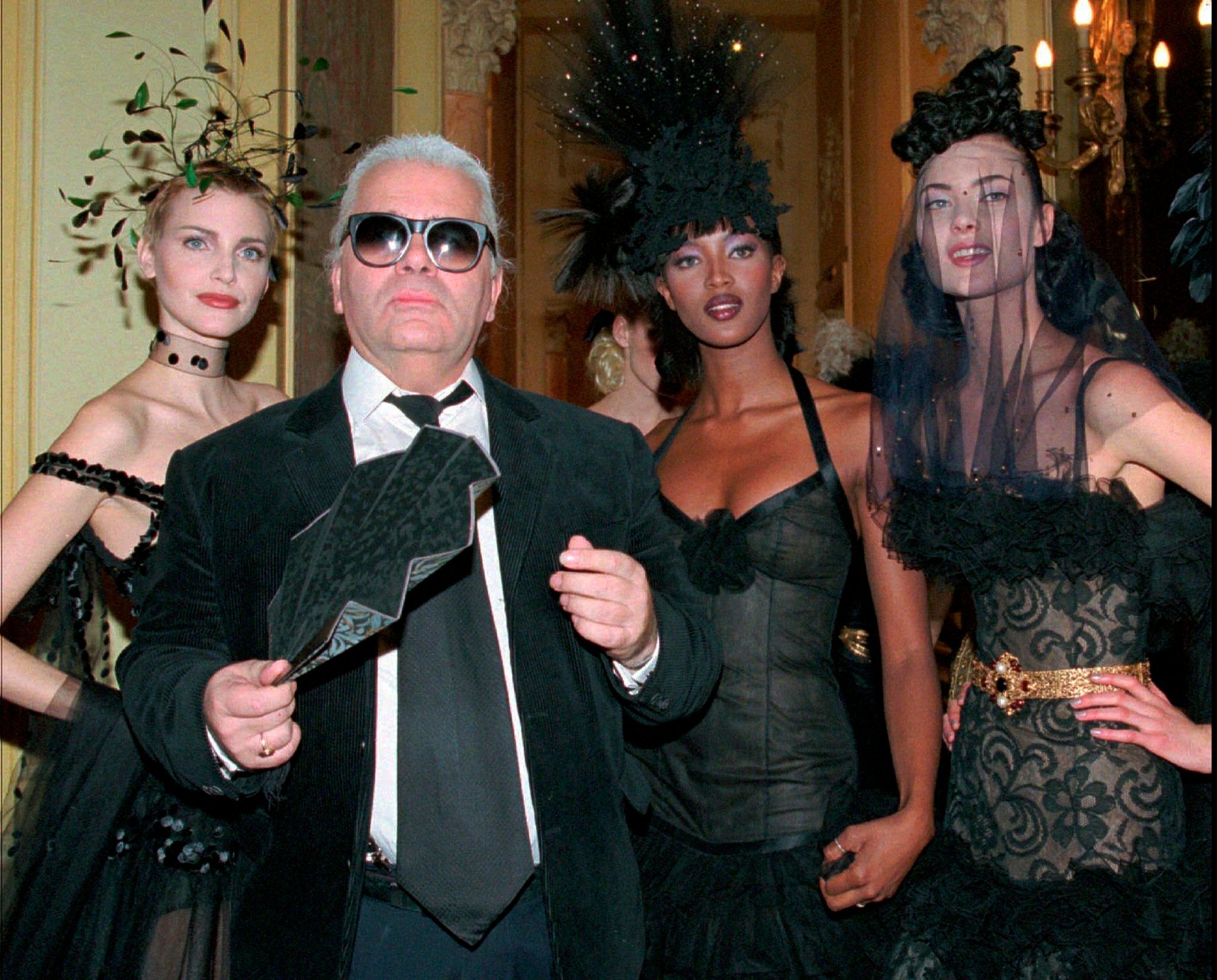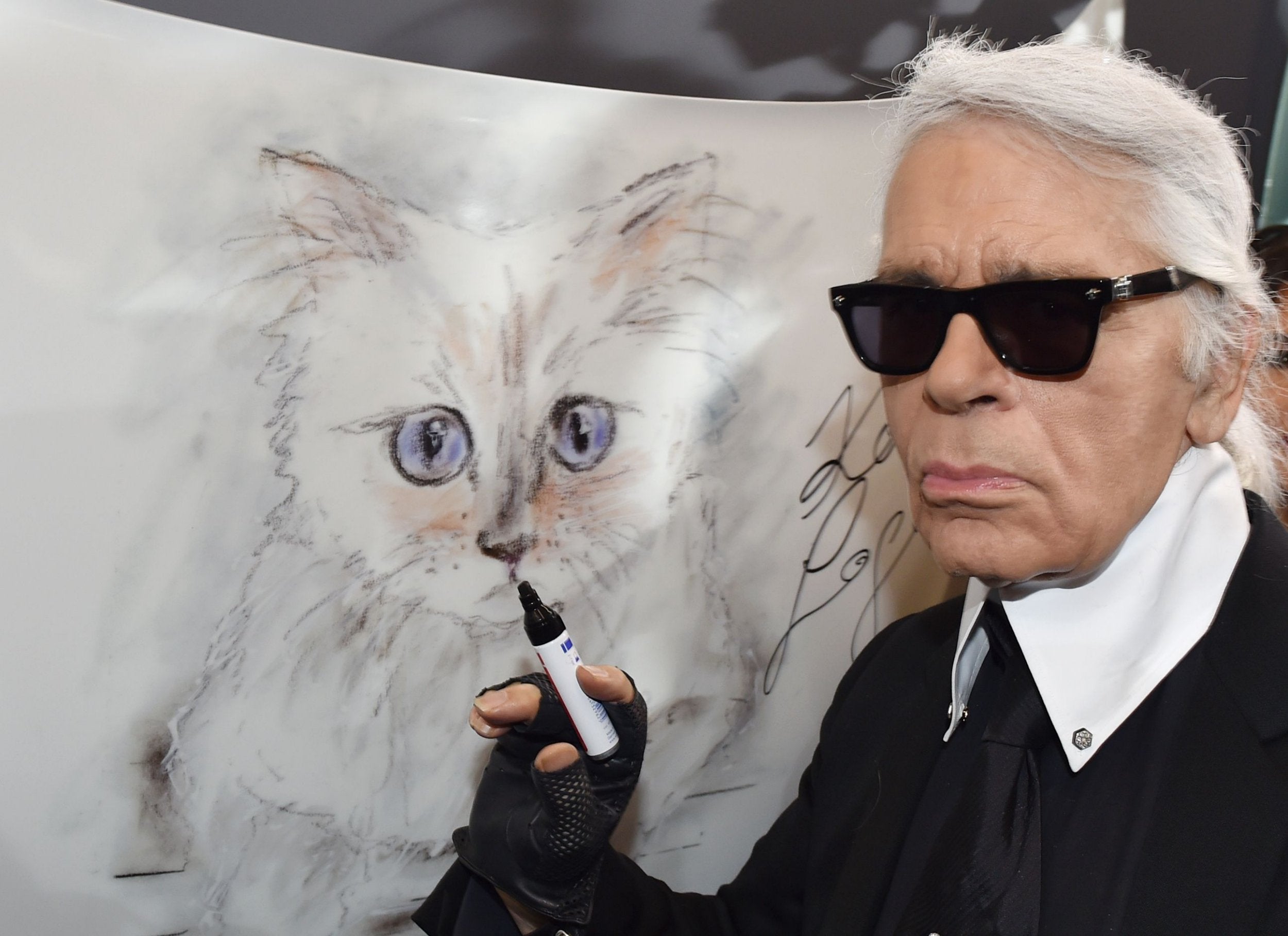Karl Lagerfeld: Larger-than-life fashion king who wowed, shocked and delighted
Outlandish to the core, he seared his personality into the imagination of the trade he loved

Your support helps us to tell the story
This election is still a dead heat, according to most polls. In a fight with such wafer-thin margins, we need reporters on the ground talking to the people Trump and Harris are courting. Your support allows us to keep sending journalists to the story.
The Independent is trusted by 27 million Americans from across the entire political spectrum every month. Unlike many other quality news outlets, we choose not to lock you out of our reporting and analysis with paywalls. But quality journalism must still be paid for.
Help us keep bring these critical stories to light. Your support makes all the difference.
The most quotable couturier in fashion history, Karl Lagerfeld was no stranger to controversy. A self-confessed caricature with opinions on everything from body fascism to the use of real fur, Lagerfeld – or “Kaiser Karl” as he was often called – had no verbal filter. He fluently spoke four languages – English, French, German and Italian – and was quick to correct any alleged misinterpretation of his comments.
As guest editor of Metro in 2012 he caused uproar when he reportedly said of Adele: “She’s a little too fat, but has a beautiful face and divine voice.” He later apologised, claiming his words had been misconstrued. The tabloids were outraged but Adele was nonplussed. “I have insecurities, of course, but I don’t hang out with anyone who points them out to me.”
To his devotees – Naomi Campbell, Rihanna, Cara Delevigne, Victoria Beckham, Gigi Hadid, Kim Kardashian, Iman and Pharrell to name a few – Lagerfeld was a creative genius who transformed Chanel from French institution to international phenomena. To industry insiders Lagerfeld was a legendary workaholic with a flair for irony and an aptitude for irreverence.

It was universally acknowledged he cracked the most difficult fashion conundrum in existence: taking a classic design signature and eloquently rewriting it.
Dressing down was alien to him. Appearing publicly in his ageless uniform featuring high starched collars from Hilditch & Key, fingerless leather gloves, large dark sunglasses and powdered white hair pulled back into a ponytail, he declared: “Sweatpants are a sign of defeat. You lost control, so you bought some sweatpants.”
A prolific designer who not only steered the house of Chanel for over three decades but was creative director of Fendi and the Lagerfeld brand, his long association with Fendi – an Italian fashion house which specialised in the use of real fur – spanned over half a century.
At Fendi’s 90th anniversary show, “Haute Fourrure” in 2016, Lagerfeld was dubbed a “fashion dinosaur” by Peta and portrayed as the grim reaper in the protest outside.
Lagerfeld was quick to retaliate: “The problem with fur… for me, as long as people eat meat and wear leather, I don’t get the message. I think a butcher shop is even worse.” Two years later Fendi bowed to public pressure and rebranded itself as “Haute Couture”, pledging to use a minimal amount of fur. Ironically, Chanel was the first luxury house in the world to stop using exotic animal skins.
Karl Lagerfeld was born in Hamburg to Otto Lagerfeld, a wealthy importer of condensed milk, and Elisabeth (née Bahlmann). The couple had a daughter, Martha Christiane, while Karl had another older sister, Thea, from his father’s previous marriage. Elisabeth, a larger-than-life personality herself, was a huge influence on his life – not least in reportedly altering his birth certificate, leaving her son’s date of birth a mystery he was not too worried about solving. In 2013 he celebrated his 80th birthday, while his official website lists his birthday date as 1938; he also once said that it was 1935.
Lagerfeld described this period of his life as “very simple. I had a nice childhood but I only wanted one thing. To get out of there.”
After attending a private school, he moved to Paris aged 14 to continue his education at the Lycee Montaigne where he studied history and drawing.
Having spotted a poster advertising an International Wool Secretariat Competition in 1954, Lagerfeld submitted a design which was cut low across the collarbone and won first prize in the coat category. An unknown 18-year-old designer called Yves Saint Laurent won the dress category with an asymmetric neckline.

Hubert de Givenchy and Pierre Balmain were on the judging panel and Lagerfeld was consequently offered a job with Balmain, where he became his assistant.
His next move was to Jean Patou, then, leaving the constraints of the Parisian couture establishment altogether, Lagerfeld became a freelance illustrator. In 1965, he returned to become creative director of Fendi, and the following year to Chloe.
Two decades later, in 1983, Lagerfeld was given an offer he couldn’t refuse. The task was seemingly impossible: to take Chanel, which had been trading on its reputation since the death of its creator in 1971, and turn it into a brand synonymous with modernity.
Calling himself an “intelligent opportunist”, Lagerfeld relished the challenge. He cleverly retained the Chanel DNA – pearls, gilt buttons, tweed suits, quilting, the camellia – and translated it into contemporary collections. Initially adhering to the couture dress code, by the early 1990s he was clearly pushing the envelope, adding denim, sportswear and elements of hip hop.
Under Lagerfeld’s direction, Chanel was worth $10bn (£7.7bn) in 2017 – making him reportedly the highest paid creative director in the world.
Often outrageously outspoken, he had an uncanny ability to court controversy while managing to never alienate his customers. He continually captured the zeitgeist: for autumn/winter 2014-15 he staged the Chanel show in a mock supermarket at the height of the fast-fashion debate. For spring 2015 he turned the show into a feminist protest.
In 2017, Lagerfeld filmed Pharrell Williams modelling his Chanel handbags when gender fluidity was flourishing on social media.
Lagerfeld didn’t just embrace change, he instigated it. In 2014 he was the first couturier to collaborate with a high street brand when he produced a range for H&M. A self-confessed bibliophile, Lagerfeld’s interests extended far beyond the fashion world. He was the owner of a library containing over 300,000 books and formed his own publishing company, 7L, in Paris in 2000.
His limited-edition designs include Steinway’s 150th anniversary piano in 2003, Diet Coke bottles and the Lagerfeld Steiff bear replete with his trademark collar and shades. He also designed the six-star hotel in Macau that bears his name.
Wanting to wear slim-fitting suits designed by Hedi Slimane of Dior, Lagerfeld underwent a weight loss programme in 2001, shedding 90lbs and going on to write The Karl Lagerfeld Diet book. Asked about his memoirs he replied: “I have nothing to say. I’m actually trying to make sure I won’t be remembered.”
Karl Lagerfeld, fashion designer, reportedly born 10 September 1933, died 19 February 2019
Subscribe to Independent Premium to bookmark this article
Want to bookmark your favourite articles and stories to read or reference later? Start your Independent Premium subscription today.
Join our commenting forum
Join thought-provoking conversations, follow other Independent readers and see their replies
Comments